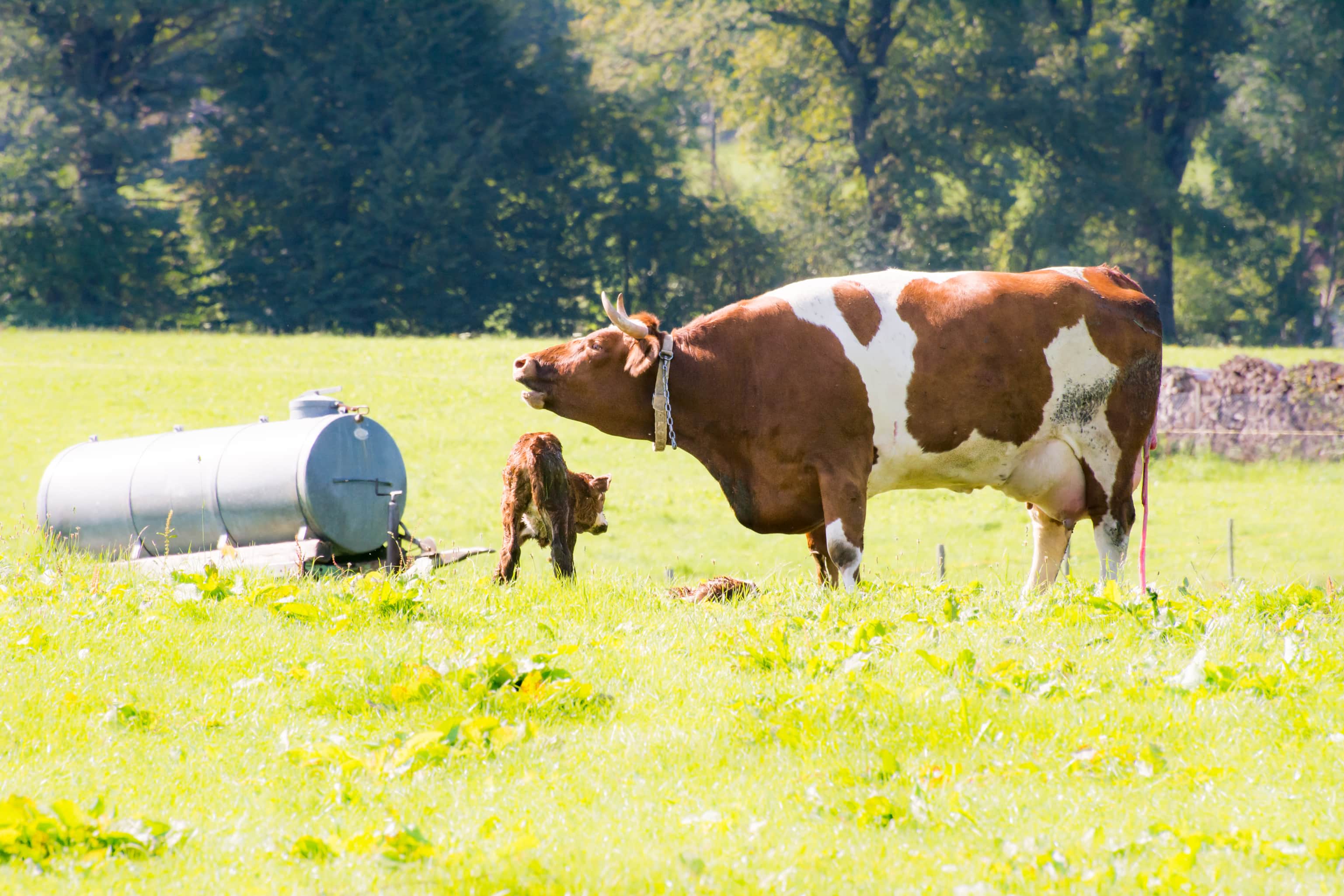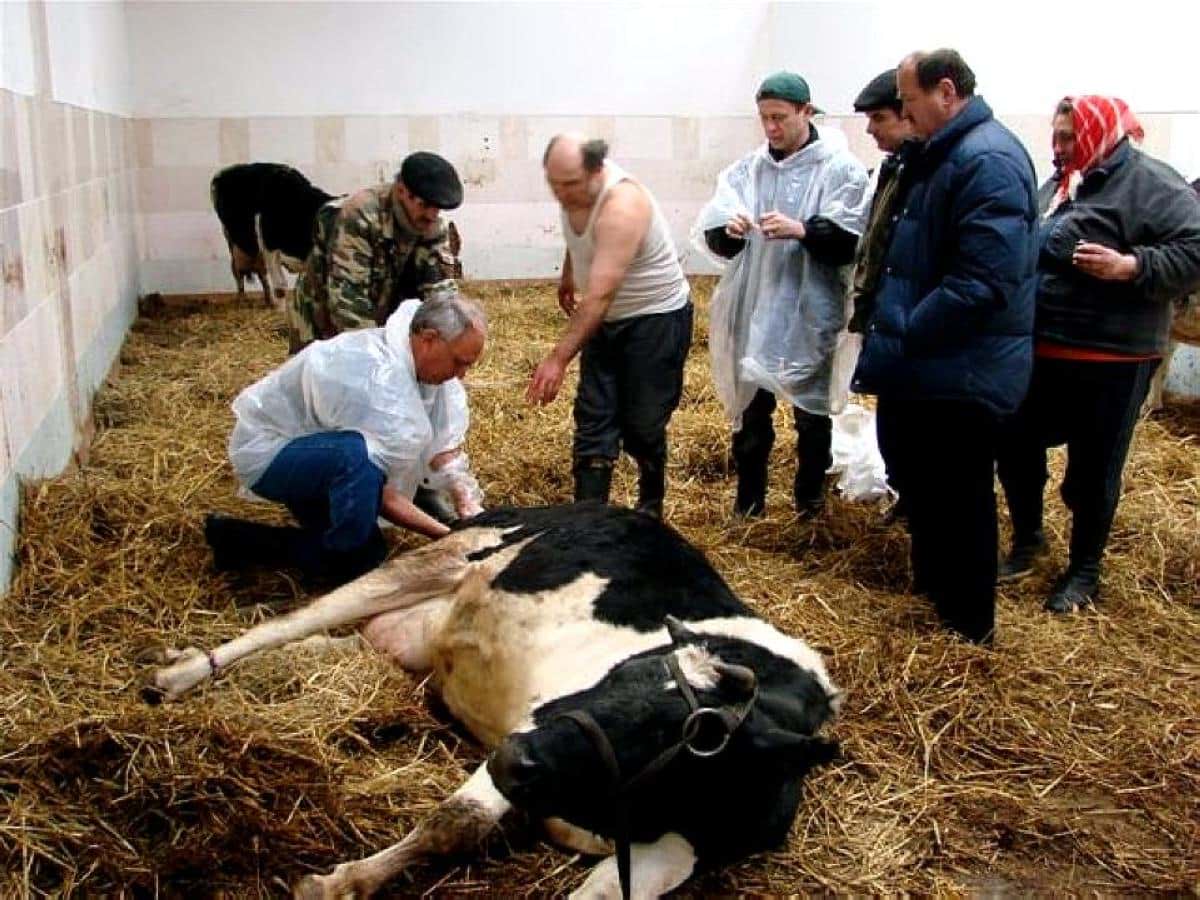It’s not rocket science to know that chubby and rosy cows are going to produce chubby and rosy calves! But did you also know that your cows’ body fat at calving time makes a huge difference in your cows’ health, but that of conception rates?
In this article, we’re going to dive deep into the connection between body fat at calving time and fertility.
And we’ll also give you some useful tips and tricks which you can use to increase fertility in your cows as well as decrease your farm costs. Sounds interesting, doesn’t it? Read on!
The thinness or fatness of your cows goes a long way in influencing productivity, reproduction, health and the long life of your cattle.
You can also improve the overall productivity of your herd and help troubleshoot problems on your farm by keeping track of each cows’ body fat reserves.
Thin cows VS fat cows
Fatness also called over conditioning, will result in poor reproduction. A fat cow attracts metabolic issues, infections and is likely to need assistance or have problems during and after calving.
Over conditioning usually happens during the last 3-4 months of lactation when the amount of milk produced has decreased, but the cow continues the intake of nutrition that was previously required for nutrition and thus gains fat.
Dry periods of overfeeding during the dry period also cause over conditioning.
On the other side of the spectrum, thinness or under conditioning also causes reproductive issues.
Thin cows do not show heat or even conceive unless they start to gain bodyweight. Often, thin cows are too small to calve around 22 months and are unable to carry enough weight to undergo their first lactation production.
Body fat during calving season is more important than body fat during the breeding season.
You must know that cattle fertility doesn’t just boomerang right back after calving. In fact, after calving, there is a period of infertility and it is during this time that a cow starts prepping for her next breeding cycle.
This ‘infertile’ period is called the postpartum interval. This is the time spent from the day of calving until the cows experience the first heat, or as the smart people call it, the first estrus cycle!
Now, pay close attention because we’re going to casually drop a bomb!
How long this infertile period lasts depends on how much body fat the cow has when she calves. Whoa!

If you’re the kind of farmer who prefers to go by the good ol’ numbers, here’s something that can help you keep track.
13% body fat means skinny cows
18% body fat means thin cows
23% body fat means moderately healthy cows
27% body fat means healthy cows
31% body fat means congratulations, you could probably feature your cow in a cute milk commercial!
All About Estrus
A cow can conceive during the first estrus cycle that comes after calving. But, her fertility isn’t going to be that great which means that the chance of a successful pregnancy is much lower.
The first estrus cycle is just a little warm-up run to get the cows' system back into action. Your cows’ conception rates are going to be way higher in the next estrus cycle.
So, here’s an important little nugget of information for you.
If you want to maximize the conception rates in your cattle, breeding should not start until the infertile period is over, and the first estrus cycle is over!
It’s simple really – if your cows are skinny at calving time, they simply don’t have enough body fat to recover by the time the breeding season comes around.
Cows that calve late and are moderately thin have a very low chance of rebreeding and the very skinny cows don’t have any chance at all.
42-day breeding season
Following a 42-day breeding season allows each cow two full estrus cycles to get pregnant.
A 42-day cattle breeding season makes sure that only the most fertile and low-maintenance cows get to rebreed and propagate in your herd. This 42-day time limit allows every cow to be back to her state of maximum fertility before getting jiggy with the bulls.
And it also doubles up as a stringent test because any cow that cannot conceive even after 42 days and two estrus cycles points to low fertility and should probably not be a part of your herd anymore.
You should also keep records of problem calvings, downer cows or retained placentas.
If your records show that you have more than 5% of cows with health issues and if more than 5% of your herd need assisted calvings then there is a major issue in the herd and it needs to be addressed stat.

Stages of lactation
Peak milk
Cows should calve with just the right amount of body fat reserves – not too much or too less.
The amount of energy that a cow can draw from her body reserves depends on weight and body composition. High milk-producing cows can lose about 100 – 150 pounds of body weight during the first 60 – 80 days of lactation. But some cows can lose even 1.5 kgs per day or higher.
In such a situation, your goal should be to minimise weight loss as much as possible by offering them high-quality pasture, hay or silage, a good balance of nutrients and plenty of water.
Mid-lactation:
Once your cow has reached its peak milk production, it will start replenishing its body fat reserves.
If this focus on regaining body condition is held off or delayed post 80 – 120 days, the cows will end up having reduced fertility.
Your nutritional program should translate into a weight gain of at least 0.3 - 0.5 kg per day which will help your cows gain weight slowly and steadily, increase their milk production and fertility and keep them from becoming too fat or obese.
Late lactation
Did you know that late lactation is one of the best times to boost your cows' fat reserves?
At this stage, your cows will naturally store fat. So if you want your cows to add on more weight and store fat, this is the best stage to do this.
Dry period
The goal of the dry period is to keep your cows ready with adequate fat reserves, for their next lactation. Separate your dry cows from the milking cows and give them a low energy feed with just the right amount of protein, minerals and vitamins.
It is better to allow your overweight and obese cows to shed some weight during the dry period. Thin cows may need to be fed extra energy feed concentrates, at least during the first three weeks of the dry period.
Make sure that your cows get good quality pasture, hay or silage every day. Usually, the minimum daily pasture intake is around 2% of body weight per day and around 85% of your total dry matter.
Body fat is a useful indicator to help you keep track of your animal health. Because numbers never lie. And it can help you improve the state of your cows' reproductive health – that’s something that’s always going to keep the best quality cows and calves on your farm!
Until we meet again, Happy Farming!
- The Dedicated Team of Pasture.io, 2020-11-23